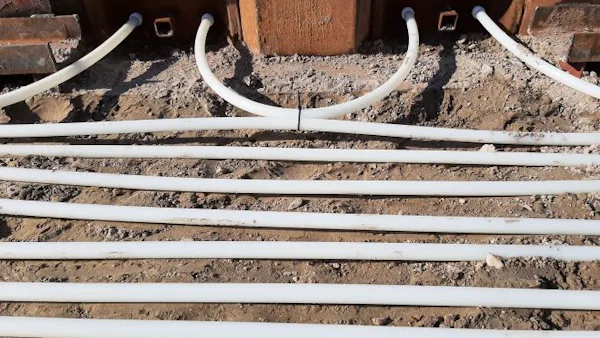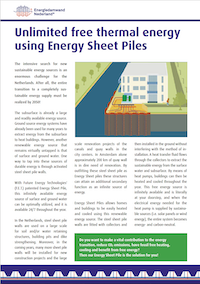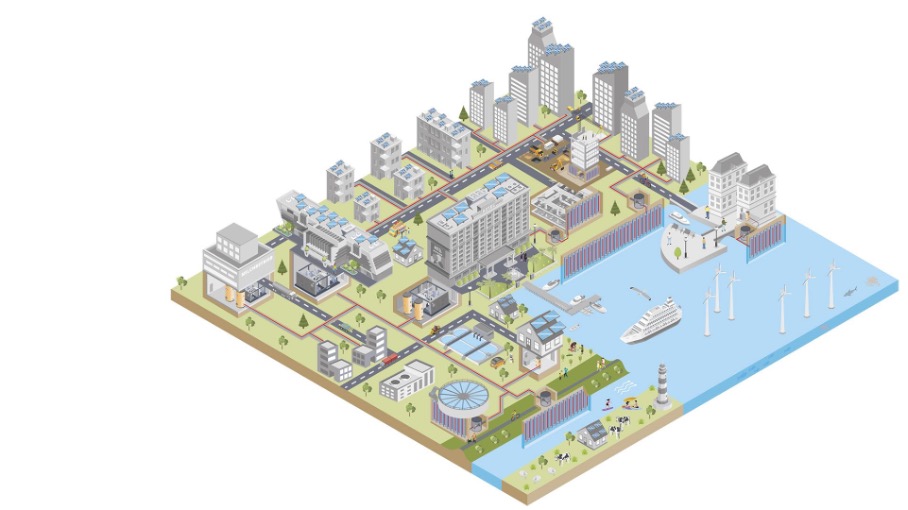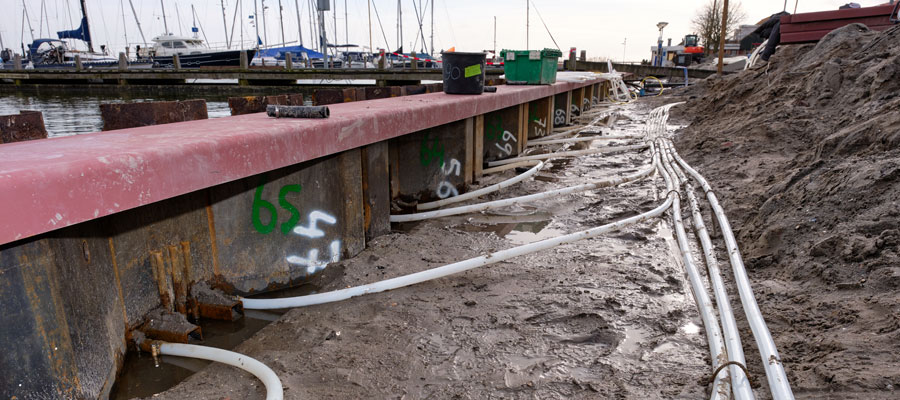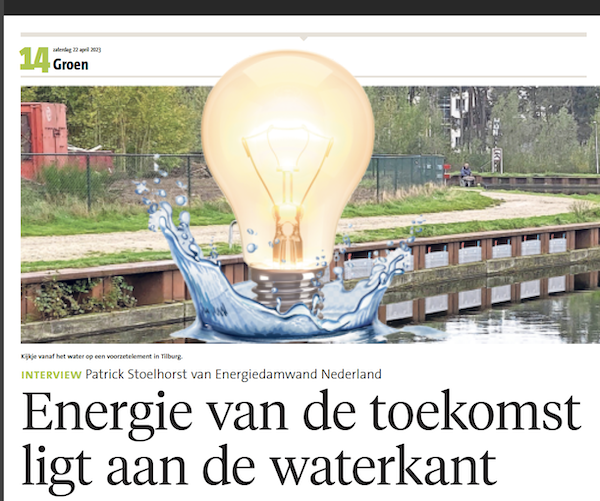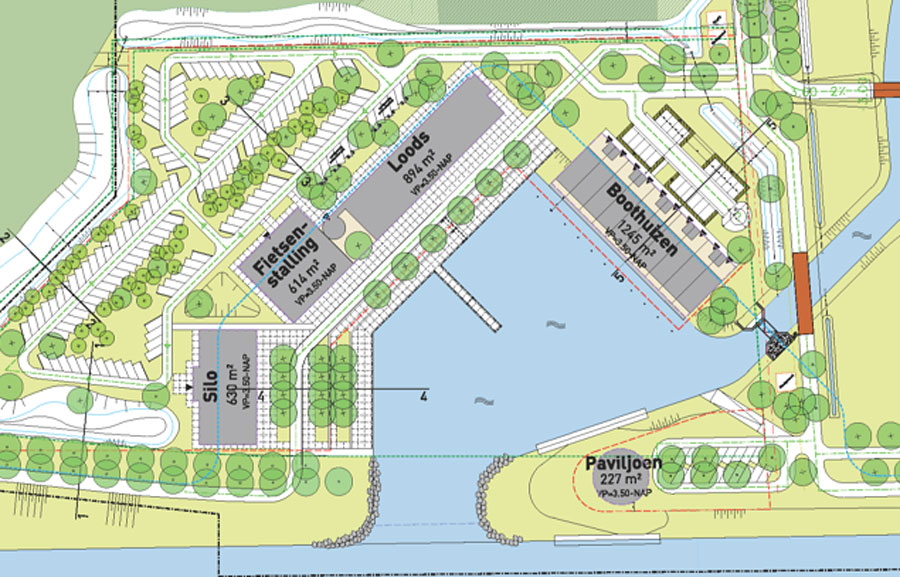By equipping steel sheet piles with collectors, harbor quays, canal banks, construction pits, dikes and a host of other water barriers can be provided with heat and cold without the need for geothermal drilling. A country built on and around water, the Netherlands has proven to be the perfect place for this innovative way of heating and cooling.
A collaboration between sheet pile supplier Gooimeer and Nathan, with a wealth of knowledge about heat pumps and geothermal energy. Peter Centen from Nathan discusses the process during the VSK trade fair.
Compagnieshaven Enkhuizen was the first. The collectors are prefabricated and added into the sheet piles. On-site, the walls only need to be installed and the collectors need to be connected. The top meter of sheet pile is not equipped with collectors, so small differences in water level have no effect. A special fluid flows through the collectors, extracting sustainable energy from the water, which can be used to heat or cool buildings through heat pumps. The innovative marina ‘Compagnieshaven’ in Enkhuizen was not afraid to pioneer a little. They opened their quays for a test setup. The project has proven to be so successful that the first building is already being heated and cooled using energy from the marina itself. After the restaurant, other buildings will follow.
The principle of activated sheet piles was conceived and patented by the German company SPS Energy ten years ago. As a sheet pile supplier, Gooimeer saw the potential in this new product. The Netherlands has a lot of water in urban areas and the highest density of sheet piles in the world. So, if it doesn’t work here, it won’t work anywhere! In Enkhuizen, a total of 72 activated sheet piles, covering a 115-meter-long quay, were installed. These were connected to stainless steel distributors and filled with a water and glycol mixture. Plastic Uponor PE-Xa pipes were used to connect the activated sheet piles to the stainless steel distributors.
Test setup
In Enkhuizen, the test setup is connected to one distributor, while the restaurant is connected to the other distributor. The distributors are connected to a PE 110mm collection pipe. In the future, this collection pipe can be connected to the marina’s buildings. As such, after testing, it will become a single collective system. Through the system now in place, the marina can gradually work on sustainability. Buildings will be energetically improved one by one and connected to the collection pipe. After the restaurant, the watersports shop will be connected and in few years, the main building will follow.
A small sea container with a complete test setup is located on the quay. It tests, among other things, how many delivery systems can be connected to the sheet piles. It contains a modulating alpha Innotec brine-water SWCV122K3 heat pump with two buffer tanks, one for the central heating boiler and one for tap water.
Plenty of benefits
Heating from sheet piles offers plenty of benefits. In the coming years, many steel sheet piles will be installed in new construction projects or in quay walls in inner cities that need renovation. These can easily heat or cool the houses and buildings behind them. Since these sheet piles are often necessary anyway, installation costs are almost entirely saved.
Another advantage is that the installation of the sheet piles does not disturb the soil. It is a completely closed system, so no fluids are introduced or withdrawn from the ground. In addition, the construction time is relatively short because many sheet piles can be installed per day. Furthermore, steel sheet piles are excellent conductors, and water has a very high heat storage capacity. A COP of 5.0 is certainly achievable. Lastly, the system is entirely quiet.
If you would like more information about Energy Sheet Piles and the many possibilities this system offers, please contact us.

